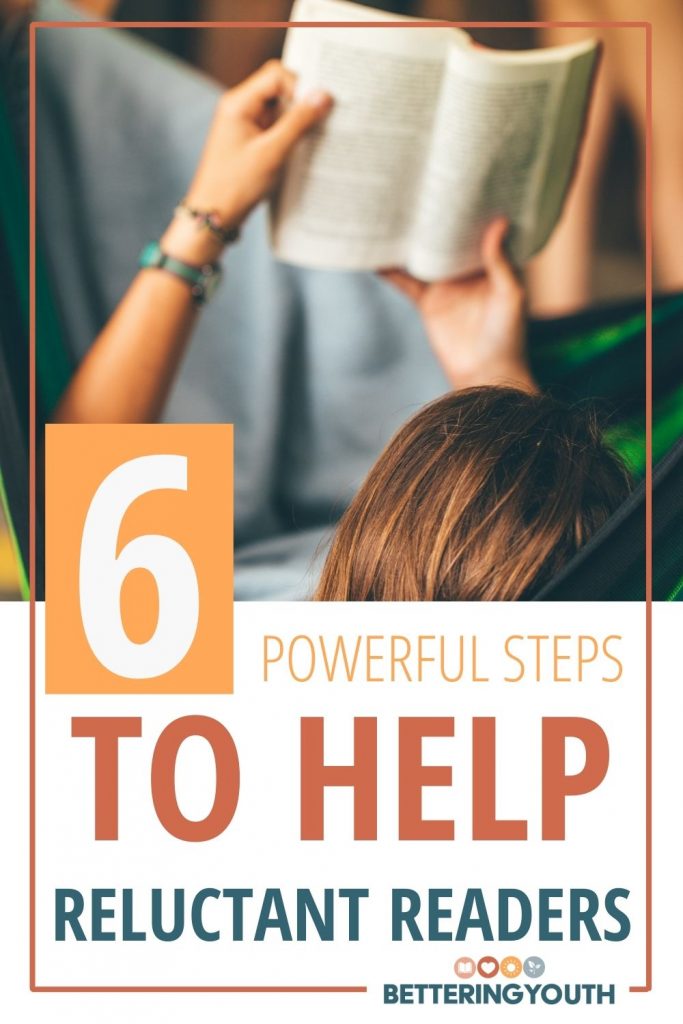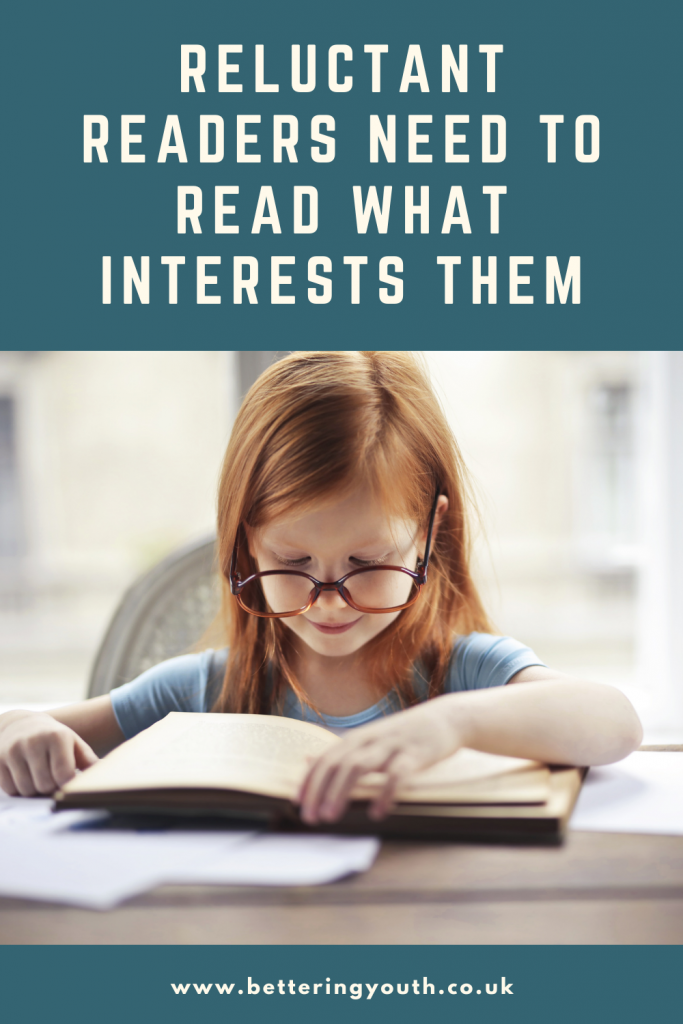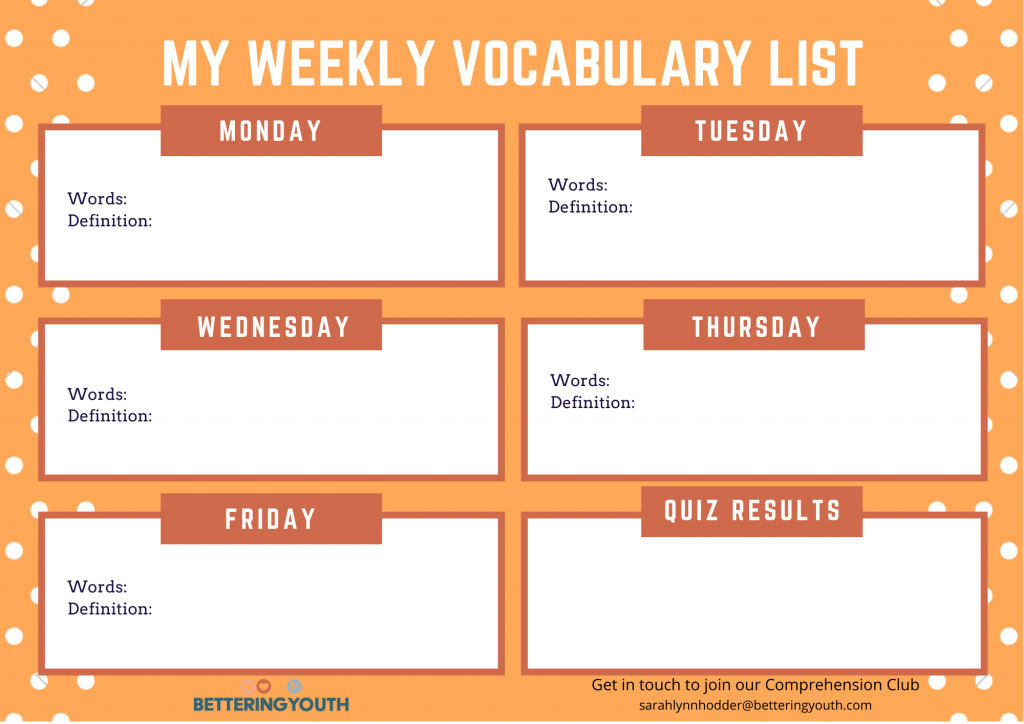In today’s blog you’ll learn how to support reluctant and struggling readers.

Is your child a reluctant reader? Knowing how to support reluctant and struggling readers can feel like a daunting task!
Here at Bettering Youth, we love to support children academically and emotionally as we believe in preparing children for Above and Beyond the classroom. As such, you’ll find some great resources here to help your child become a more proficient reader, and (finally!) find the joy in reading!
As we work with families who are also preparing for upcoming exams, I have likewise included some tips and tricks that just might give them the extra boost for comprehension and vocabulary – just in time for an 11+ entrance exam!
Supporting a Reluctant Reader
There are a variety of factors that need to be considered when supporting a reluctant or struggling reader. I have summarised these potential factors into six sections to help get you started.
If you know your child needs support in comprehension be sure to check back for our top ways to build comprehension.
Reluctant Readers are Often Struggling Readers
Have you noticed that a reluctant reader often lacks expression in their reading. This robotic tempo can be a sign that the reader is fixated on working out the spellings and phonetics; They can’t yet read and visualise an event unfolding.
A good first place to start in supporting a reluctant reader is by assessing their knowledge of spelling and phonetics. There are a variety of ways to assess these, though the easiest is likely to keep track of the results of their weekly spelling tests. This is always a great place to start. Take it a step further and look at a piece of their work to assess if there are typical mistakes.
Some common examples can be the ‘k’ sound that needs to be ‘qu’.
or the ‘sh’ sound that’s mixed up with the ‘ch’ sound.
By understanding their knowledge gaps, you can concentrate your efforts on bringing them up to speed quickly and efficiently.
Encouraging Readers to Try Without Fear of Failure
“She rather not try then try and get it wrong.”
When speaking to a client’s parent earlier this week it became clear how closely connected wellbeing is to academic success (or any success for that matter).
Building a growth mindset around reading is a great first step.
Growth Mindset is defined as the ability to see a problem, fail at a problem, and learn from a problem. It’s characterised by the knowledge that not everything will be easy, and rather than expect ourselves to always be perfect, we must learn how to be fearless learners.
Most reluctant, or struggling readers, feel intimidated about starting because they already sense that they are behind. It can feel like a mountain too big to climb. This feeling of overwhelm can be elevated when there is resistance to get support.
Some readers I have tutored have resisted the tools which I have shared because they believe only ‘poor readers’ need these tools. They fail to realise that these tools are what proficient readers are using!
Debunking these myths through reiteration, whole class teaching, and modelling is an important step in building trust and confidence. As is praise and consistent encouragement.

A helpful guide to boost growth mindset!
I know that building resilience and a growth mindset can take time (and patience!) So I’ve compiled 4 simple and effective steps to help you build your child’s growth mindset.
Finding Texts that are the ‘Right Level’ and are Interesting
If you were hesitant to do something (let’s say start that morning workout routine you’ve been putting off for… years) would you prefer to start with something you enjoy, or something that felt overwhelmingly difficult, foreign and was, to your dismay, full of burpees?
My point exactly.
Our readers approach these tasks with the same reservations. Therefore, it is our job to guide them to find books they enjoy and understand. This will not only build their confidence, but it will encourage them to keep exploring the big wide world of literature!
Check out our Top 8 Recommended Books for Reluctant Readers.

What if they’re stuck on the ‘children’ books and you want to push them further?
Truthfully, there’s nothing wrong with a child preferring to read books written for younger audiences.
However, if you’re at the point of wanting them to expand their exposure to vocabulary and more colourful characters, then perhaps we need to first understand what draws them to these books.
- Is it because they are short?
There are some incredible pieces of literature for older readers that are great for introducing depth.
- Is it because they have pictures and it helps the reader to decode the hidden meanings?
This is a skill they need to be taught! Being able to visualise what an author is describing is a comprehension skill.
- Is it because the vocabulary is easy and they know they’ll understand it all?
Sounds like a growth mindset and some confidence boosting may be in order along with modelling how to approach challenging and unknown words.
Chances are, the reason will show you an obstacle that can be overcome with a bit of patience, and if you’d like, support.
Make Reading Multi Sensory
“Academics are not high on the priority list for him right now. He’s much more into sport and play.”
Here, another parent expresses how learning 11+ vocabulary poses a challenge for their son who is very sporty.
It’s also a common theme that crops up in the classroom. Our traditional way of teaching is just not set out to support the active, kinaesthetic learners. So how can we get them up to speed without tying them to a chair?

Free Vocabulary Builder Activity!
I have created a 9 week vocabulary builder activity that includes the top 100 words used in the 11+ exams! Download the free vocabulary activity in our Fabulous Freebies!
If you’re already a member, the vocabulary activity is waiting for you in our Fabulous Freebies Library!
Not a member yet? Click the button below to join for FREE!
Make it multi-sensory!
There are so many incredible word games that can support an active child in learning.
One of my favourites, and the method suggested to this particular family, is Wall Word Tag.
….Yes I did just make up that name but to be honest, I like it and I believe it sums up the game quite well.
Wall Word Tag:
This game can be used for all ages in learning 11+ vocabulary, sight words, definitions, and GCSE concepts.
What you’ll need:
– Word list that you’re practising (download the most common words in past 11+ exams here)
– Index cards of words you’ll put on the walls
Set up:
– Place the index cards on the walls around the room
– Player 1 reads out the first word (or definition) from the word list
– Player 2 races around the room and attempts to find the correct match
– If the answer chosen is correct, add it to the Completed Pile
– If the answer is incorrect, add it to the Incomplete Pile and revisit this pile the next day
Alternatives:
– have multiple players racing to the answer
– put a timer to improve recall efficiency
– keep the incomplete words on the wall and refer back to them throughout the week
Between Word Wall Tag and Vocabulary Charades they are sure to see words as more fun and manageable thus boosting their confidence!
How to Make Reading More Multi Sensory
In teacher’s college, one of my classes was ‘how to teach English to a secondary class’. We delved into tween literature and discovered new and fun ways to interact with text.
A few of my favourite ways (as I’m a kinaesthetic learner myself) are as follows:
- Echo Reading: teaches fluency and expression
You demonstrate reading with expression and the child has to be your echo - Charades: teaches summary and connections
A child chooses a part of the book and acts it out without speaking. Children guess until the timer runs out. - Quick Draw: teaches comprehension in visualisation
Read a passage then pause and say “quick draw” students have 2 minutes to draw what happened in that text. This will help to establish what students are visualising and how word choice can impact how we interpret meaning.
Teaching Readers Key Text Features
All texts have some form of rules by which they are structured. When children approach a text – typically a non-fiction text, they can become consumed by the minor details and lose sight of the bigger meaning.
Have you ever asked a child to recap something they’ve read for you and they get stuck on the weather, or the colour of something or another small detail?
When students have a clear understanding of the text features present for both non-fiction and fictional writing, it provides a framework in how to approach it.
Most reluctant readers believe that to be a proficient reader means to read quickly. Therefore, they are often the ones who will skip past the charts, captions, quotes and diagrams in efforts to be quicker.
It is our job to teach readers to know and understand the key text features so they can better interpret and comprehend what they are reading.
Boosting Comprehension Skills for Reluctant Readers
A final note to consider when supporting reluctant and struggling readers is their degree of comprehension.
This has cropped up in many of the other ideas, however I believe it deserves a mention regardless.
Comprehension makes up a big portion of the expectations placed upon children in terms of exams and testing. Therefore ensuring that they have a strong grasp of the different comprehension skills is imperative.
Comprehension can be subdivided into 5 key ares:
- visualising
- making connections
- inferring
- making predictions
- summarising and retelling
Each of these subdivisions require continued modelling and scaffolded practise to ensure competency.
Conclusion
Reluctant and struggling readers can feel overwhelming to support, but when we break it down, there’s always a next step we can take. My hope is that by reading this blog, and the 6 sections that can impact a reader’s proficiency, you will now feel more confident in supporting their journey to love books!
We must remember that while it is not always clear, the greatest link between struggle and success is often emotional resilience. Emotional resilience is what allows us to become learners because it teaches us that learning is about the journey. Failure is inevitable along the way.
Bettering Youth tutors always endeavour to embed emotional wellbeing into our academic tutoring programmes to ensure we are preparing students for above and beyond the classroom.
We would love to welcome you to our Comprehension Club!
This is a weekly 50 minute club where children will connect, learn the skills and techniques to boost comprehension, academic resilience and find the love for reading. We play games, watch film clips, explore various writing genres and read. A whole range of activities to support children in becoming happier and more resilient learners…. and will help reluctant and struggling readers gain that much needed growth mindset.
If you are interested in our Comphreneion Club and would like more information, please click here to find out more about this terms schedule and focus.
Feel more confident in supporting reluctant and struggling readers? Be sure to comment below with your current situation, and share with other parents of young readers!



